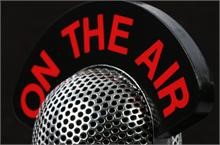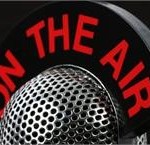
Small businesses and large businesses alike thrive on public positive relation exposure in the media. It is a way of getting your name or your brand known across a wide range of interested people very quickly. If you can make it a regular event, not only is your brand likely to be well known, it is likely to be respected.
So how do we make ourselves attractive to the media and develop a symbiotic relationship where we and they benefit and they seek to repeat the process? What are some tips in handling the media?
The media aims to offer information to its readers/viewers/listeners in a way that will make them feel interested and affected. Nobody will publish/broadcast, for example, jargon or officialese or material that assumes even the slightest knowledge of the subject. Editors are fond of telling their reporters and sub editors that they are writing for the “man on the moon” who knows nothing of the goings on down here.
Production processes
The deadline is vital to your news getting out on time. The media live and breathe deadlines, so if you don’t meet their deadlines, you won’t make the news.
All media have different processes and deadlines to meet, but there are common themes to what they do, and if you want your story to reach the public, it is vital that you meet their deadline. They will not wait, and a good time for media releases and conferences is around 11am.
Newspapers contain by far the most news information of all media types. Therefore, by looking at the process that they use to reach production, we can draw the similarities to other mediums.
- Distribution of paper: 1am-3am This is when the newspapers are distributed to the outlets. The first copies are on a truck to the Western destinations by 1am with deliveries to the airport for onward distribution.
- Printing: 11pm-3am This varies according to the number to be printed (this varies from day to day) but generally printing begins at 11pm.
- Final paper to print: 10pm The final version of the paper needs to be at the printers by 10pm, where each page is turned into a plate in preparation for printing to begin.
- Subbing process: 2pm-10pm This is when the pages are designed, copy checked reporters told to get more information or to check existing information; pictures edited and placed, headlines and captions written.Each page has a strict deadline, so if there is a late breaking story, it had better be good to make the next edition of the paper.
- News conference: 10am and/or 4pm This occurs at least once a day, typically at 10am and 4pm.The editor meets with the section heads such as the chief reporter (known as the chief of staff), chief photographer, sports editor, news editor and whoever else they deem relevant. The purpose of the meeting is to plan and assess the day’s events, and decide what will appear, and what will not appear.
- News filtering: All day News editors filter, or taste the various reports, and set a priority, and order more research. They present the editor with the news list which he uses in the news conference.Typically the news editor has 35-50 stories a day to prioritise.
- News gathering: All day This occurs throughout the day and involves the reporter, photographer, cameraman and sound engineer all gathering the news.
Alternative mediums
- Television: Have fewer stories than newspapers, and a quicker editing process. They are capable of accepting raw material as late as 5pm in time for their 6pm news bulletin.
- Radio: Again, they have fewer stories and a quicker editing process. Similar to television, but generally only need to cover a five minute news bulletin.
- Magazine: Similar to newspapers, but have longer timeframes. They tend to focus in specific areas (sports magazines, women’s issues, health & fitness, lifestyle etc), and have a considered approach to comment and analysis.
Tips for getting your media release out on time
- Don’t get lost in the crowd: Most media releases don’t see the light of day. Use a different approach.
- Get to know the news editor or chief of staff: These are the people that know the fate of your media release. You can then call them to learn what is happening to it.
- Be clear and concise: Concentrate on getting the information down in a clear and concise way. News people get frustrated with fancy or clever wording. Keep it simple.
- Have people in pictures: Your new water pump needs to have people in it if you want a picture of it to appear in the media. Ensure you have something to say, and don’t waste the media’s time. Give the media an idea of what your press conference is about so they can make an informed decision if it is newsworthy.
- Remember the process your media release will go through: It takes time for your media release to hit the press. Don’t forget the deadlines and the process your news needs to go through prior to hitting the public.
- Give them something to film: The television screen hates talking heads, but loves action. Give them movement, something they can film and leave the talking heads to the print people. That way, you can achieve a broad range of exposure across all of the media.
- Be wary of offering lunches: Only offer lunches at press conferences if you want to interact with the media. The journalists quite often want to get to their next job, so don’t waste their time unnecessarily.
The Editor/ Journalist relationship
All editors have journalists they feel, from experience, that they can trust implicitly. Therefore, they are usually more inclined to give their reports prominence and credibility. Get to know the favoured few and build a relationship of mutual trust and respect. And expect it to be like any other relationship. It won’t be trouble free.
What makes news?
In it’s purest form, news is something you didn’t already know.
However, I could tell you that my granny’s cat caught a mouse last night. You didn’t know that, but I doubt if either of us would call it news.
So we introduce an element of relevance.
OK. That same cat caught the mouse in your compound. Getting warm? Only slightly, I suspect.
How about, the cat was badly bitten by your dog when it tried to run off with the mouse. So we introduce action and reaction. Still, it wouldn’t make the front page. Or possibly any page.
So then, did you know my granny’s cat was suspected of carrying rabies and your dog could be infected, making it a danger to the whole neighbourhood, the whole city, maybe even the whole country? Now we’re talking. We’ve expanded the relevance far beyond the original two people and we might make the front page with a rabies scare.
Of course, that’s not the way it would happen. But you can see how news has to be relevant to a number of people – the more the better. And if you can add a human element, you’re on a winner. People like to read, watch, and hear about people. All the hardest hitting news stories concern people. Good reporters try to make these people real by telling us their age, their occupation, their marital status, number of children and so on so that we are being told about a person, not a statistic.
From the horror of 9/11 to the joy of the Melrose Cup, the effective stories concern people and their experiences.
So introduce people – real people – and you have a much better chance of making the headlines.
Questioning techniques
The following table outlines common questioning techniques used, or not used, by journalists to gather additional information. Keep in mind that typically, journalists are quick to assess the impacts of the issue, and will then delve further to look for the human element to make it news.
- Open questions: These are avoided as they give too much scope for the interviewee to highjack the interview. They are more likely to ask narrow open questions to direct the interview to a particular area of interest For example, rather than asking; What do you think is the danger to the environment in your new landfill project? They would prefer; How will you deal with threats to the environment in your new landfill project?
- Leading questions: These are common as they lead the interviewer to the topic area that they want addressed. For example: How do you react to reports that your deputy wants your position?
- Probing questions: These are the most common questions used by the media and are used to help the interviewee think more deeply about the issue at hand. For example: A year ago you said the economy could grow at 8 per cent but now you say we are heading for a recession. What changed so quickly?
Interview Hints & Tips
Television
- Be conversational – don’t sound like you are making a speech
- Don’t look directly into the camera – don’t look like you are making a speech!
- Think about your body language – being a visual medium, it is often more important what people see than what is said
- Be relaxed without being flippant – be attentive to questions, even if you don’t answer then
- Smile, but don’t smirk – look as if you know what you are talking about
- Don’t talk for more than 20 seconds at a time – you start to lose them after that
- Watch the big players – Barack Obama, Bill Gates…
Radio
- Be conversational – you are being broadcast into someone’s living room, car or living space, so don’t sound intrusive
- Keep it short and concise – radio doesn’t like long monologue
- Use examples as much as possible – “the Bill aims to make Fiji into the second Singapore, a high tech success story that is the envy to all”
- For in depth interviews, sound in tune with the interviewer – it’s harder for them to ask the tough questions if they like you!
- Give the interviewer inside information – it draws the audience closer, and they feel like insiders. “I’ve never said this before, but…”
Newspapers, Magazines
- Have a media library of pictures of the boss available on your website for media use or available for your public relations staff to distribute
- If you must talk to a reporter on the phone, speak slowly and clearly, without sounding like a moron! Few people take short hand and it is illegal to tape conversations without consent. Offer to allow the reporter to tape the conversation – they’ll love it!
Additional hints and tips
- Use the MBE form of reply:
- Main point
- Because
- Example
- Don’t forget the vernacular divisions of the various media organisations as this reaches certain demographics which may be in line with your organisational purpose
- Perform a media watch to assess how much coverage they receive for the level of effort you put in
- Develop a media style that suits the media
- Practice and be prepared with the key messages that you wish the public to receive
- Be truthful, regardless of how sensitive the matter is. Let’s say you are an oil executive and you’ve had an oil spill in the harbour and the media are all over you. Call a press conference as soon as humanly possible tell them what’s happened – but focus on what you’re doing about it. Take them out there; show them the extent of the damage and, more importantly, the extent of the rehabilitation effort.






